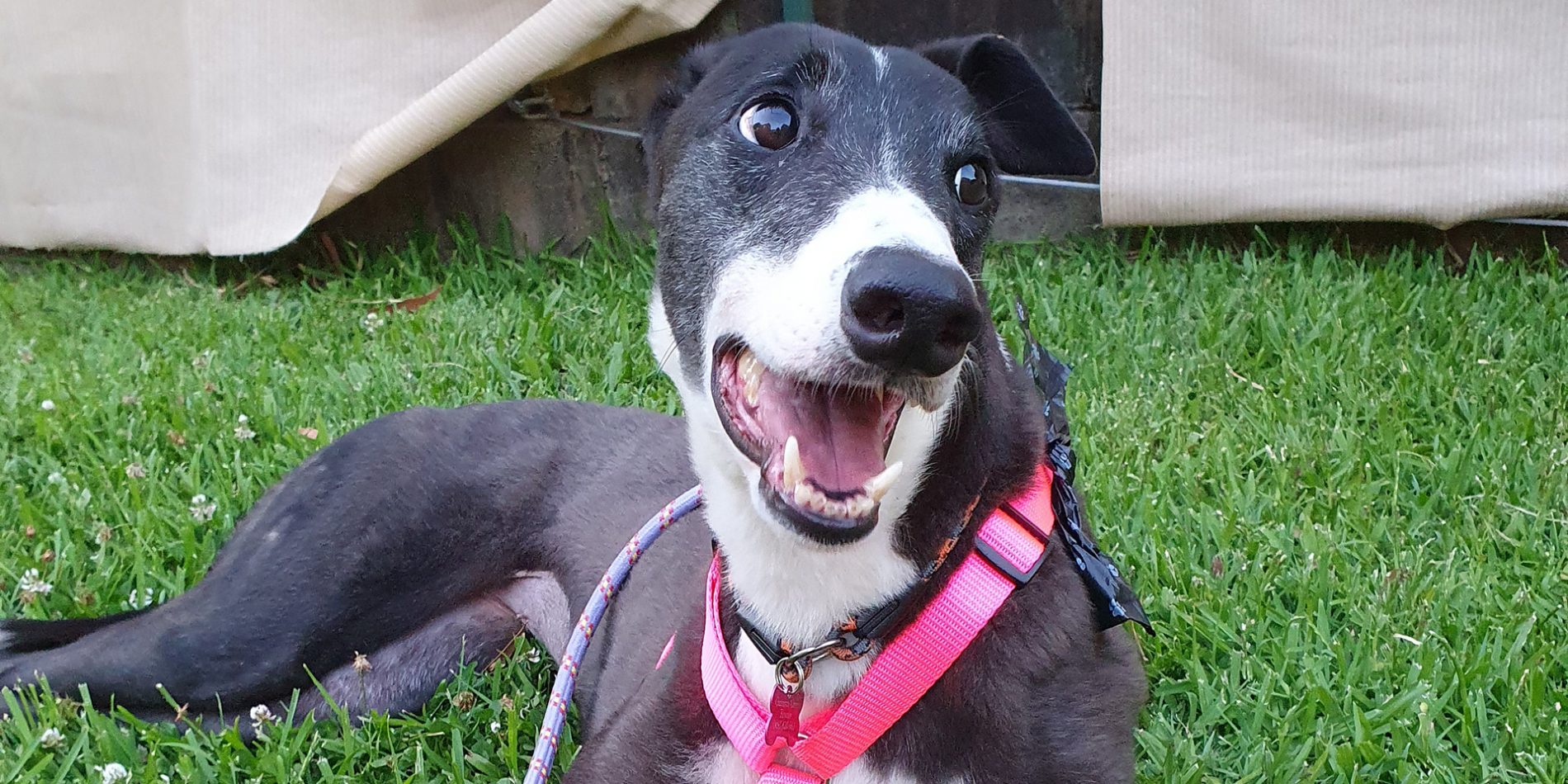Ready to Adopt or Foster?
Contact US
Get In Touch
Email: info@gumtreegreys.com.au Phone: 03 9088 7570
Download Applications
What to Know Before Adopting a greyhound
We’ve collected our answers to the most common questions about adopting a greyhound. As you navigate through this FAQ section, you’ll gain insights into the world of greyhound adoption and learn what makes these magnificent creatures such wonderful companions. Whether you’re a first-time dog owner or an experienced canine enthusiast, we’re here to guide and support you on this rewarding journey.
If there’s a question you don’t see addressed, please reach out, and we’ll be more than happy to assist you. Happy reading!
Before you arrive home with your new hound, you should have designated a safe, quiet, warm place to put a soft, thick bed down for your dog. Once home, help your greyhound by being calm and give them time to explore without making any demands. Before you go to bed take your greyhound out for a last toilet visit. How well you manage on the first night sets the pattern for the future. Don’t make a fuss when you leave them to go to bed. After all, your greyhound slept on their own in kennels so they are used to being alone at night.
Greyhounds tend to do best on complete diets. Having a small digestive system, your dog will do best on two meals a day. As a rough guide the total daily intake for a small greyhound is about 350 grams and for a huge one about 450 grams. But, like us, they vary individually and you need to keep an eye on your dog’s condition and adjust the food accordingly.
Some greyhounds coming out of racing may display food possession problems. They are kept at minimum weight to race. Every piece of food in their kennel has been for them. If your greyhound is possessive of food, NEVER touch him or his food bowl while he is eating. Keep everyone in the family, especially children, well away while you are preparing his food and while he is eating.
Many things can go wrong for your dog at the dog park. We believe “bad things happen to good dogs” in a dog park. Uneven surfaces, dog agility platforms and jumps, together with holes dug into the ground by other dogs, can all present a very real danger to your greyhound when he is running at top speed around a dog park. Do not worry if your dog is only getting lead walks. This is what they are used to. The world outside kennels is a big scary place and they feel safer on a lead beside you.
When any dog enters a new home, whether it is a puppy that the parents have bought, or whether it is an older rescue dog, it is important that parents put the rules in place to help keep their children safe. Just like us, dogs sometimes do not like to have their space invaded.
It is likely that your greyhound will find other types of dogs completely new and different and may be curious, or even scared of other dogs. Don’t stand back and let your dog investigate the other dog. It’s like saying “There you are, there’s another dog. What are you going to do about it? It’s your problem”. Instead, shorten your lead so your dog is close beside you. Put yourself between your greyhound and the other dog and keep walking purposefully ahead. This way you are being a role model. Your body language is saying “I am not bothered about this other dog so you needn’t be”.
Some dogs do not cope well with being left at home alone, resulting in “separation anxiety”.
If you come back to a pile of poo, or irate neighbours who have been deafened by a crying dog, or chewed up furniture, please, please do not chastise the dog. Your greyhound could be stressed or bored. If it is anxiety, treat the symptoms and make sure you make no fuss on leaving him. Just pick up your keys and go. Say nothing. When you come back in, do the same. Ignore him completely until he relaxes (yawns, stretches, blinks or lies down) then reward him by making a fuss of him. If it is boredom that is causing the problem, take him for a long walk and make sure he has been left with plenty of games. Greyhounds are bred to hunt, chase, catch and kill.
Dogs in the wild will find either a cave or dig a small, secluded pit in the ground in which to sleep or just relax, away from the world. A crate will become your greyhound’s den – it will be seen as a safe place to be – it is a retreat from the world. It is a safe place to leave your greyhound when you are out, until they are housetrained and can be trusted not to destroy your home. Even after he is trained and trusted, you may find your greyhound curled up happily asleep in an open crate. The crate should never be used as punishment.
Just like other breeds of dogs, greyhounds can be interested in chasing cats – however, greyhounds are so much faster that they stand a far greater chance of catching them! Some greyhounds can settle with small dogs and cats and it is one of the most important issues to deal with when you first adopt a dog. Always be aware that although your greyhound may be completely safe with his own family cat – off territory he may view anything that runs as fair game – so be prepared!
Many greyhounds do not know how to play with toys as adults as they did not get the opportunity to learn as youngsters. All you need is a start – toy play can be gradually built up as the dog gets the idea. A lot of verbal praise and encouragement when your dog looks at, sniffs at or paws at the play item so that they get lots of attention for interacting or showing any interest at all. If you engage with the toy, moving it around, not shoving it in the dogs’ face, sooner or later your dog will wonder what the excitement is about and will investigate further. Be patient, but very enthusiastic when they do come forward of their own accord, a few seconds or minutes will improve over time as long as the game is rewarding to them.
Sleep aggression is quite a common behaviour in all dog breeds, but especially in retired greyhounds. Retired greyhounds must get used to sharing household space with other members of the family, including children and other pets, rather than having their own private ‘den’. They may feel that they need to be ‘on their guard’, even subconsciously while they’re napping. Many retired racing greyhounds exhibit sleep aggression for reasons related to their background, not their personalities. Like all post-adoption adjustment issues, dealing with sleep aggression involves time, patience, awareness (of yourself and your dog) and common sense. Ensure your greyhound has their own bed, and discourage them from sleeping on spaces used by humans to avoid territorial issues. Some greyhounds will overcome their sleep aggression as they gain confidence as a pet, but many will always require careful management.

Gumtree Greys acknowledges Aboriginal and Torres Strait Islander people as the first peoples and Traditional Owners and custodians of the land and waterways on which we live. We honour and pay our respects to Elders past and present.


